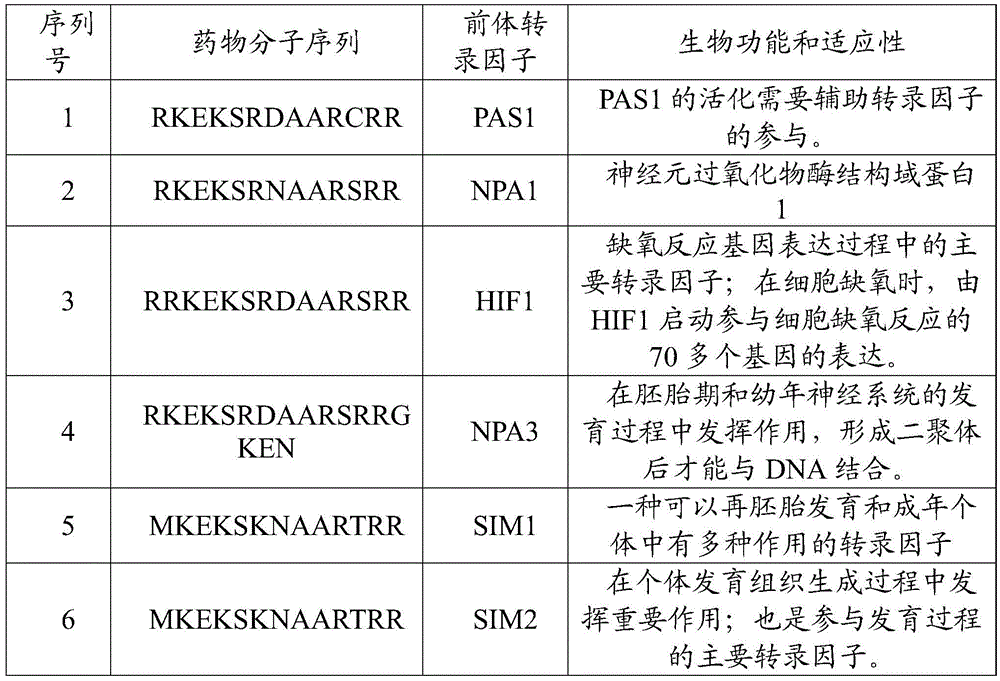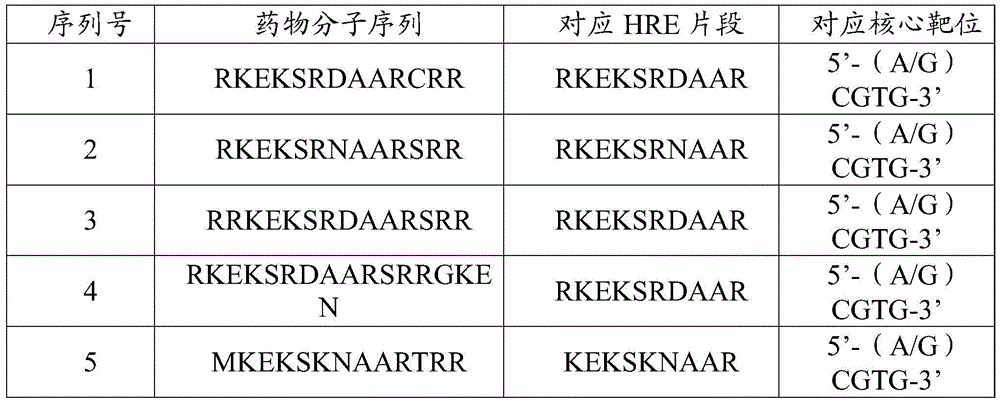Chromatin peptide for controlling expression of anoxic reaction gene through combining hypoxic response element
A technology of response element and hypoxia response, which is applied in the field of self-treatment of malignant tumors, and can solve the problems of hypoxia and insufficient energy supply.
- Summary
- Abstract
- Description
- Claims
- Application Information
AI Technical Summary
Problems solved by technology
Method used
Image
Examples
example 1
[0043] The chromatin peptides of sequence numbers 1-5 in Table 2 were synthesized by the liquid-phase peptide synthesis method. The basic synthesis method is that a single N-α-protected amino acid is added repeatedly to the growing polypeptide chain, and the entire synthesis step is realized step by step. The synthesis process mainly includes protecting the amino acid N-α with a protecting group, then adding it to the polypeptide chain step by step, and anchoring the polypeptide chain on a chemically stable carrier. After the synthesis process is completed, the synthesized chromatin peptide can be separated from the solvent by centrifugal washing, then the protective group is removed, and finally the polypeptide chain is cleaved from the carrier for purification.
example 2
[0045] The animal drug efficacy test of the chromatin peptide that closes the hypoxia response element of the cell is tested to test the inhibitory effect of the chromatin peptide on the lung cancer of mice.
[0046] Lung cancer in mice transferred to the bone marrow, and radiotherapy could not be performed because the infection site was too extensive. Only the chromatin peptide corresponding to the NPA1 transcription factor was used for the test, and the molecular structure of the chromatin peptide was RKEKSRNAARSRR. From the next day, 0.2 mg was administered by intramuscular injection every day, and one month was taken as a course of treatment. During the course of treatment, antibiotics were used to control concurrent infection, and the tumor basically disappeared after three courses of continuous medication.
example 3
[0048] To determine the therapeutic effect of chromatin peptide RRKEKSRDAARSRR on rabbit liver malignant tumors. Malignant liver tumors in rabbits are not sensitive to radiotherapy. Administer 0.3 mg per day by intravenous injection. After 70 days of continuous administration, the tumor size becomes significantly smaller, and the tumor basically disappears after 30 days of continuous administration.
PUM
 Login to View More
Login to View More Abstract
Description
Claims
Application Information
 Login to View More
Login to View More - R&D
- Intellectual Property
- Life Sciences
- Materials
- Tech Scout
- Unparalleled Data Quality
- Higher Quality Content
- 60% Fewer Hallucinations
Browse by: Latest US Patents, China's latest patents, Technical Efficacy Thesaurus, Application Domain, Technology Topic, Popular Technical Reports.
© 2025 PatSnap. All rights reserved.Legal|Privacy policy|Modern Slavery Act Transparency Statement|Sitemap|About US| Contact US: help@patsnap.com


